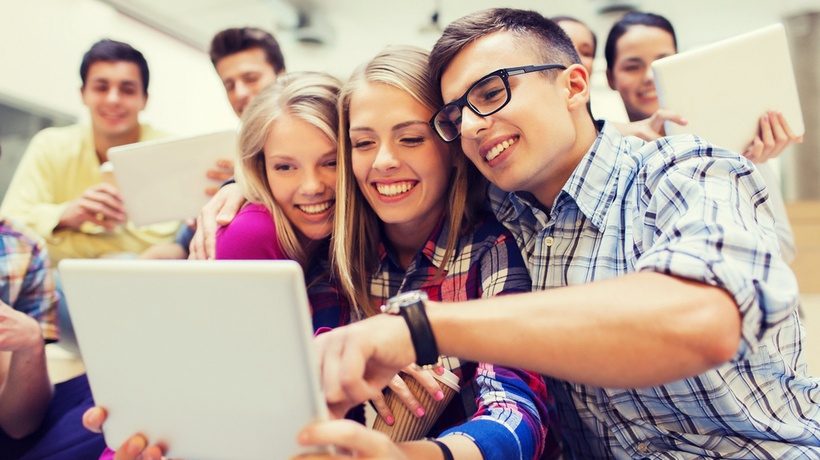Connecting MI To Learning Games
Multimodal meaning is one of the 7 affordances in eLearning theorized by Cope and Kalantzis as presented in their book eLearning Ecologies (2017). This concept involves the ease of multiple uses of text, media, sound, and data resources, or the “what” of multiliteracies for creating learning and teaching content. One of these multimodal meaning concepts in learning is games.
The use of game-based learning or using learning/educational games to teach has been part of education for decades but was only recently viewed as a new teaching tool (Keesee, 2011). What is a game? Games are a form of play or sport, especially a cognitive one played according to rules, and decided by skill, strength, or luck. Powerful games in the classroom include (Davis, 2014):
- Multiple levels or challenges
- A compelling or intriguing storyline
- A personalized, unique experience for each learner
- Rewards such as unlocking certain capabilities based on achievements
- Additional rewards and feedback from the teacher or class
Mastery of tasks, skills, or concepts is an educational goal so a variety of tools such as games or game-based learning has now gained momentum to achieve these. There are different game categories [1] from leisure games to educational leisure games and educational games.
Game-Based Learning And Multiple Intelligences
Game-based learning is evidently related to multiple intelligences (MI) as games utilize multimodal stimuli such as text, objects, sound, graphics, images, speech, and other data to engage the learner with ease making learning fun and interactive. Multiple intelligences (MI) presented by Howard Gardner in his book Frames of Mind (1983) proposed “multiple minds” where we acquire, process, and express knowledge in multiple ways through multiple modalities and multiliteracies.
Gardner's theory involved 8 intelligences he asserts humans have: mathematical, interpersonal, intrapersonal, linguistic, musical, visual-spatial, bodily-kinaesthetic, and naturalist, which have lent to the discourses on multimodalities and multiliteracies in learning. In the MI theory, our differences lie in the combination of dominant intelligences each person has and in the modalities we use to acquire, express, or articulate knowledge and learn. If you still do not know what your MI profile is, here is one website with a quiz [2] to find out.
Adopting MI as an educational philosophy creates a solid foundation that supports game-based learning as MI specifically advocates for practices supported by research which show that:
- Providing students with multiple ways to access content improves learning (Hattie, 2011).
- Providing students with multiple ways to demonstrate knowledge and skills increases engagement and learning and provides teachers with a more accurate understanding of students' knowledge and skills (Darling-Hammond, 2010).
- Instruction should be informed as much as possible by detailed knowledge about students' specific strengths, needs, and areas for growth (Tomlinson, 2014).
(All authors cited in Edutopia, 2016)
Educational games for preschool and primary show how MI is addressed and related to game-based learning (e.g., games for visual-spatial, linguistic, mathematical, musical, bodily-kinesthetic, etc.). But games for learning do not have to be limited to children. In fact, they can be just as effective and at the same time entertaining to teenagers and adults in educational and corporate settings.
Benefits Of Using Games In Learning
To conclude here are some of the benefits of using games in learning (Prensky, 2011):
Developmental area—benefits/skills learned:
- Physical: eye-hand coordination, fine motor skills
- Cognitive: problem-solving, strategic thinking, critical analysis, expansion of memory capacity, helps to focus and pay attention, draws on natural curiosity, logical sequencing, etc.
- Socio-emotional: fun, pleasure, motivation, entertainment, conflict-resolution, challenge/competition, interaction with individuals or groups, story (emotions)
- Language: literacy, literary forms, feedback, representations, symbols, story
Learning with technology (including games!) whether in the early grades or through to high school is here to stay. Instead of rejecting or questioning their value, education stakeholders should address how computer-mediated tools can be used more appropriately and how more unified research should be done to investigate how these tools enhance learning.
References:
[1] The use of computer games in classroom environment
[2] What Kind of Intelligence Do You Have?
Sources:
On learning games/game-based learning
- A Guide to Game-Based Learning
- Why Educational Video Games Are So Helpful to Parents, Teachers and Students
- 17 Best Apps for Kids, According to Parents and Kids Alike <https://www.goodhousekeeping.com/electronics/g28212386/best-apps-for-kids/>
- Keesee, G. (2011) "Educational Games"
- Prensky, M. (2011) "Fun, Play and Games: What Makes Games Engaging." Digital Game-Based Learning. McGraw-Hill, 30 Jan. 2011.
On multiple intelligences
Sample games for kids
- Educational Games for Kids <https://www.education.com/games/?cid=11.2143>
- 11 Great Games to Educate and Entertain Your Kids at Home <https://www.wired.com/story/best-educational-games-for-kids/>
- Some of the Best Online Learning Games for Kids <https://www.nytimes.com/wirecutter/reviews/our-favorite-learning-apps-for-tablets-and-smartphones/>








